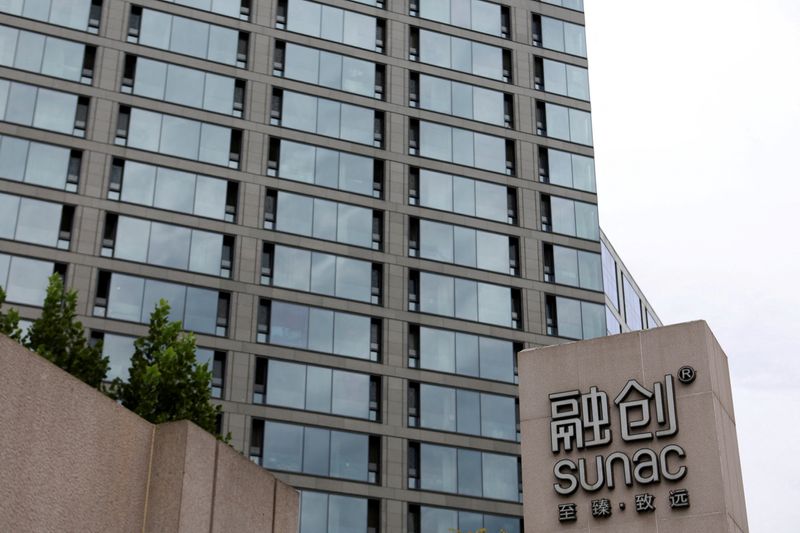Exclusive-Sunac China flags difficulty making Sept dollar bond payments, sources say
2025.01.06 04:31

By Clare Jim
HONG KONG (Reuters) – Developer Sunac China has informed some of its dollar creditors it is unlikely to meet a September bond maturity deadline, two sources said, as weak sales raise the prospects for a new round of offshore debt restructuring in the property sector. Sunac, which used to be among the country’s top developers by sales, was the first to complete a comprehensive overhaul of its $9 billion offshore debt in November 2023, after the sector was jolted by an unprecedented debt crisis in 2021. As part of the restructuring process, the company’s first tranche of restructured notes will mature in September, with the option to extend maturity by one year. The extension provision also applies for the tranche due in September 2026. In recent weeks Sunac indicated to some bondholders that it would explore alternatives for September 2025 tranche maturity due to uncertainties in the sector’s sales recovery that could affect its ability to repay, the two sources said. Beijing-based Sunac has not yet provided specific details of these options to its creditors, said the sources, who have knowledge of the matter but did not want to be identified as the conversations were private. Sunac declined to comment. This development adds to market expectations the crisis-hit sector will see a second round of offshore debt restructuring with not many betting on a recovery in companies’ cash flows in the near future despite Beijing’s support measures. Chinese authorities have sought to bolster the property sector, which accounted for around a quarter of the economy at its peak, with a range of measures including cutting mortgage rates and minimum down-payment ratios over the past year. As part of its debt restructuring roadmap, Sunac had in 2023 provided cash option and shorter note tenures to its dollar creditors as it had not expected a prolonged market slump, said three separate people close to the company. However, investor confidence in the successful execution of these plans remains limited, as illustrated by the company’s September 2025 bonds currently trading at around 14 cents on the dollar, Morningstar senior analyst Arvind (NS:) Subramanian said. “Until they see that traction of these developers actually generating cash flow, they’re not too confident that restructuring will actually deliver cash flow to repay investors,” Subramanian said. DEBT RESTRUCTURING In Sunac’s case, it is unclear if it would extend the maturity for the September 2025 tranche or consider revamping all its offshore debt, possibly involving steep haircuts and more equity swap, in a second round of debt revamp, the sources said. Chinese property developers had total liabilities of roughly $12 trillion in 2023, according to an estimate by China’s National Bureau of Statistics. That figure includes all kinds of debt, as well as onshore and offshore liabilities. Over the last three years, a growing list of developers have started offshore debt restructuring processes after defaulting on their repayment obligations to avoid getting liquidated. On Monday, developer Logan Group said that it was offering a restructuring proposal for the majority of its around $8 billion offshore debt, including conversion to mandatory convertible bonds for its offshore creditors. An offshore restructuring adviser, who asked to remain anonymous due to the sensitivity of the issue, said many developers would struggle to repay offshore debt as they have to use their cash on home completion and refinancing onshore debt. Sunac is also the first Chinese property developer working towards reducing its $2.1 billion of yuan-denominated bond debt by more than half through a debt restructuring process. Even as highly indebted developers began tackling the restructuring of offshore bonds in 2022, they repeatedly extended maturities for onshore bonds, pinning their hopes on a pick-up in cash flow. Sunac’s onshore bond revamp plan, proposed in November, has so far won sufficient support from holders of eight bonds, but it needs approval from holders of all of its 10 bonds to implement the proposal.








